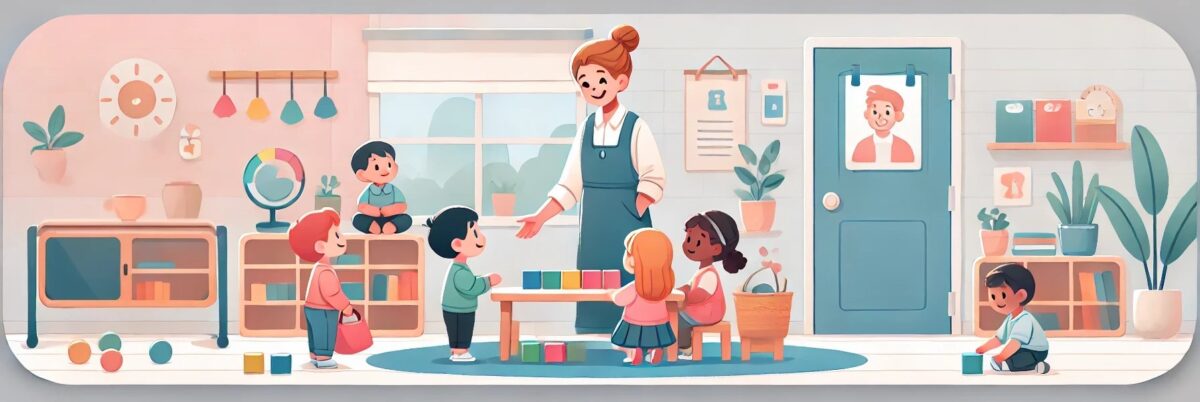
7 Ways to Design Early Childhood Environments That Truly Nurture Learning
Discover 7 powerful strategies to design early childhood environments that promote safety, sensory development, cultural inclusivity, and impactful learning.
Creating an early childhood education environment isn’t just about filling a room with toys and colors—it’s about building a space that nurtures discovery, supports emotional well-being, and empowers every child to grow and thrive. Whether you’re an educator, center director, or caregiver, the physical environment plays a crucial role in shaping developmental outcomes.
Let’s explore how to design early learning spaces that are safe, inclusive, inspiring, and optimized for growth.
1. Design for Exploration and Safety
A quality learning environment starts with safety and accessibility. Children are natural explorers—they crawl, climb, reach, and roam. Your space should encourage this curiosity in ways that minimize risk and maximize confidence.
Open layouts allow clear visibility and easy navigation, giving children the autonomy to move through the room with purpose. Soft furnishings like cushioned mats, bean bags, and plush rugs reduce the likelihood of injury and create cozy areas for quiet time.
Strategically placed signage, with simple pictures and clear labels, can help young learners understand boundaries and routines. Meanwhile, accessible materials at eye level encourage self-directed play and decision-making.
To further support emotional regulation, consider calming color palettes and sensory-sensitive design. Nooks with gentle lighting or a canopy can become safe havens for children needing a moment to regroup. A well-thought-out environment teaches children not only through instruction but by how it feels.
2. Empower Learning with Sensory-Rich Spaces
Children process the world through their senses, and environments that honor this reality can transform how they learn and engage.
Visual cues such as color-coded bins or light tables help organize space and spark curiosity. Tactile stations with materials like kinetic sand, water tables, or textured fabrics offer hands-on learning that builds fine motor skills and emotional insight.
Don’t underestimate the power of sound, smell, and movement. Wind chimes, scented playdough, or simple musical instruments invite children to explore their surroundings in a full-bodied way.
Sensory-rich zones also serve children with differing needs, helping them stay focused, calm, and communicative. For example, a quiet corner with noise-canceling headphones or weighted blankets can support children who are easily overstimulated.
This dynamic sensory integration supports everything from language acquisition to focus and social development.
3. Use Constructive Playthings to Enhance Learning
Purposeful play is at the heart of early childhood development—and Constructive Playthings offers resources that turn play into profound learning experiences.
Wooden blocks promote spatial awareness and problem-solving. Sensory bins invite children to sort, scoop, and sift, supporting both emotional expression and motor coordination. Dramatic play materials, such as costumes or puppets, spark creativity and communication.
The magic of Constructive Playthings lies in their open-ended design. These tools don’t dictate how a child should play—they invite them to explore, imagine, and create on their own terms. This type of unstructured engagement is essential for developing critical thinking, cooperation, and resilience.
Educators can integrate these resources into thematic units, sensory play, or guided activities to enrich daily learning without overwhelming young minds.
4. Blend Indoor and Outdoor Learning
Learning doesn’t stop at the classroom door. Outdoor environments provide essential opportunities for movement, exploration, and sensory discovery that complement indoor learning.
Indoor settings offer structure: circle time, story sessions, or STEM corners. In contrast, outdoor spaces enable large motor activities like running, jumping, and climbing—crucial for physical development and self-confidence.
The key is integration. Portable materials such as nature journals, storytelling kits, magnifying glasses, or even musical instruments can seamlessly transition between settings, blurring the line between indoor and outdoor learning.
You might establish an outdoor classroom with weather-proof cushions, mobile easels, and natural materials. These spaces provide diverse settings for everything from science exploration to group collaboration and creative play.
5. Include Family and Cultural Representation
A child’s learning environment should reflect who they are and where they come from. When children see their culture, family, and language reflected in their surroundings, they feel validated and secure.
Consider incorporating multilingual books, traditional musical instruments, and diverse dolls or dress-up clothes. Display family photographs or create a “Meet My Family” wall that celebrates home life and builds community connections.
Designated areas like family lounges or bulletin boards for parent contributions can bridge the gap between home and school. These spaces send a powerful message: families are partners in learning.
This inclusion fosters social-emotional growth and helps children develop empathy, cultural awareness, and pride in their identity.
6. Train Educators for Environmental Mastery
Even the best-designed environment needs the right educators to bring it to life. That’s where Inspire Care 360 steps in, offering professional development through ECE University.
These programs train educators to analyze space effectiveness, manage classroom flow, and adapt setups based on developmental needs. Whether it’s rearranging furniture to minimize distractions or selecting new materials for an emerging theme, empowered educators can make smart, timely changes.
Regular training ensures your staff stays current with state standards, safety protocols, and pedagogical best practices. More importantly, it builds a culture of intentionality and professionalism.
By investing in educator growth, you’re investing in the quality and impact of your learning environment.
7. Reflect and Improve Constantly
Environments are never static. Children grow, needs change, and learning evolves—your spaces should, too.
Regularly observe how children interact with different areas. Are they engaging deeply? Do certain zones go unused? These insights, along with family feedback and structured assessments like ECERS (Early Childhood Environment Rating Scale), can guide meaningful adjustments.
Small updates—like adding soft lighting, introducing new textures, or rotating books—can renew a child’s sense of wonder. Even reorganizing shelves to increase independence or accessibility can lead to more purposeful engagement.
A reflective mindset encourages innovation and shows children that their needs matter.
Conclusion
Early childhood environments are powerful teachers in their own right. When designed with intention, they become catalysts for discovery, connection, and growth.
By leveraging high-quality resources like Constructive Playthings, fostering family inclusion, and investing in educator training through Inspire Care 360, centers can create vibrant spaces where every child feels seen, supported, and inspired to learn.
Let your environment be the first teacher—and let it teach well.
Learn More About
Inspire Care 360
Feeling overwhelmed running your childcare business? Inspire Care 360 is your supportive community offering business solutions, professional development, health care for employees and expert guidance to help you thrive. Contact us today - you deserve it!
Schedule a TourYou may also like…






